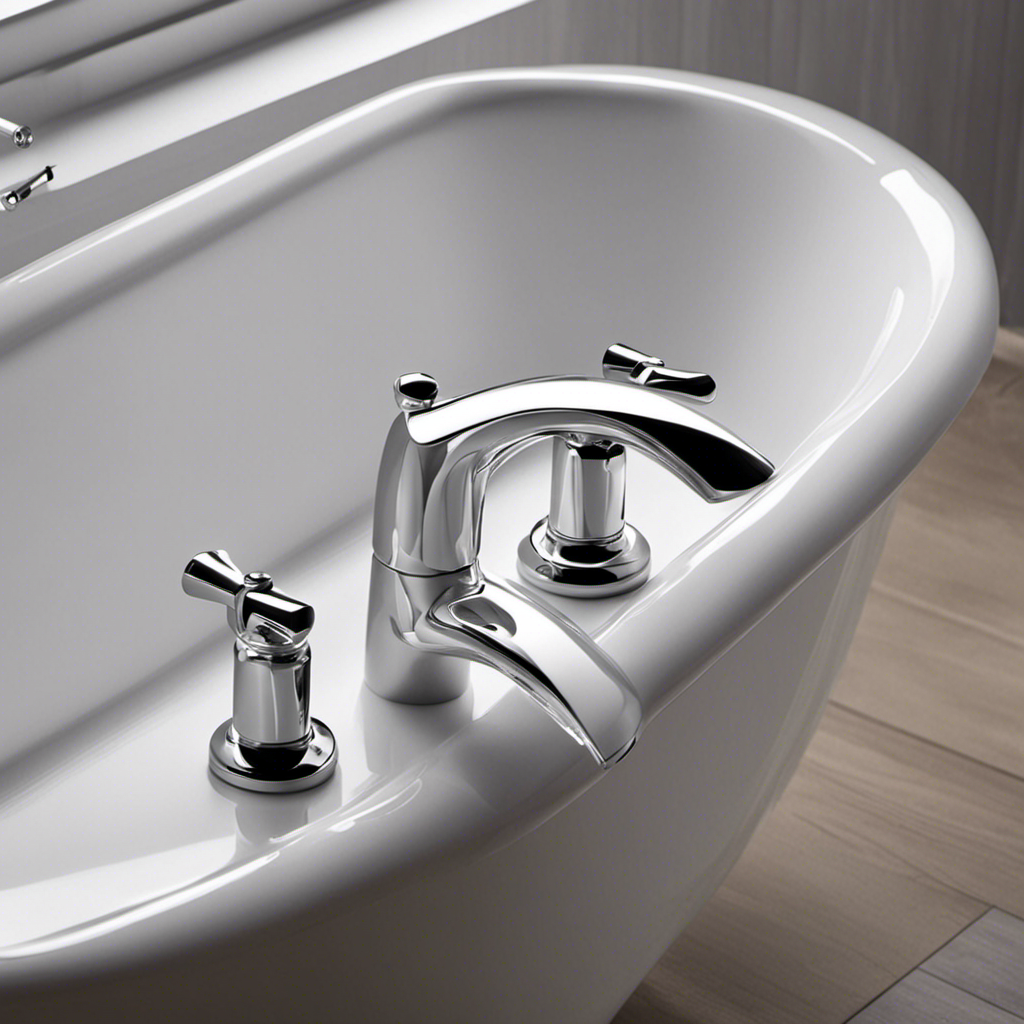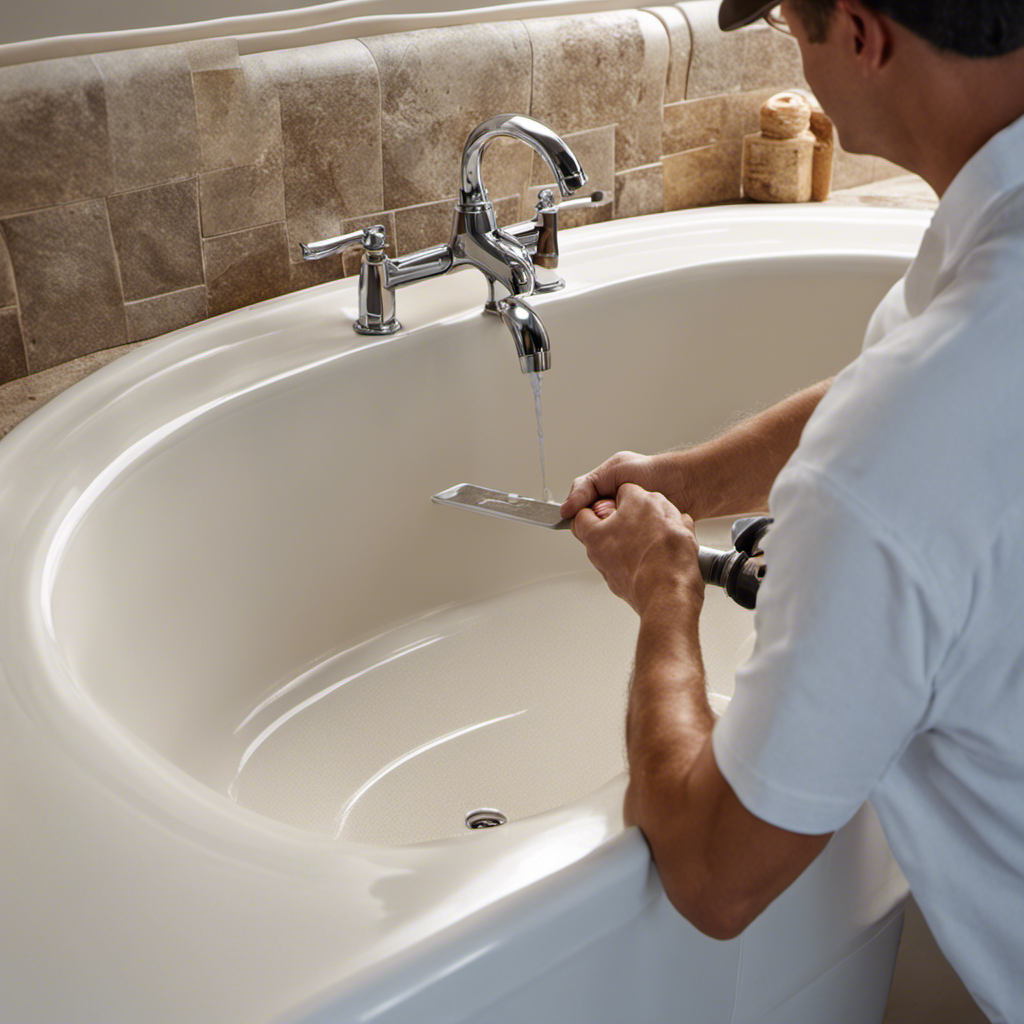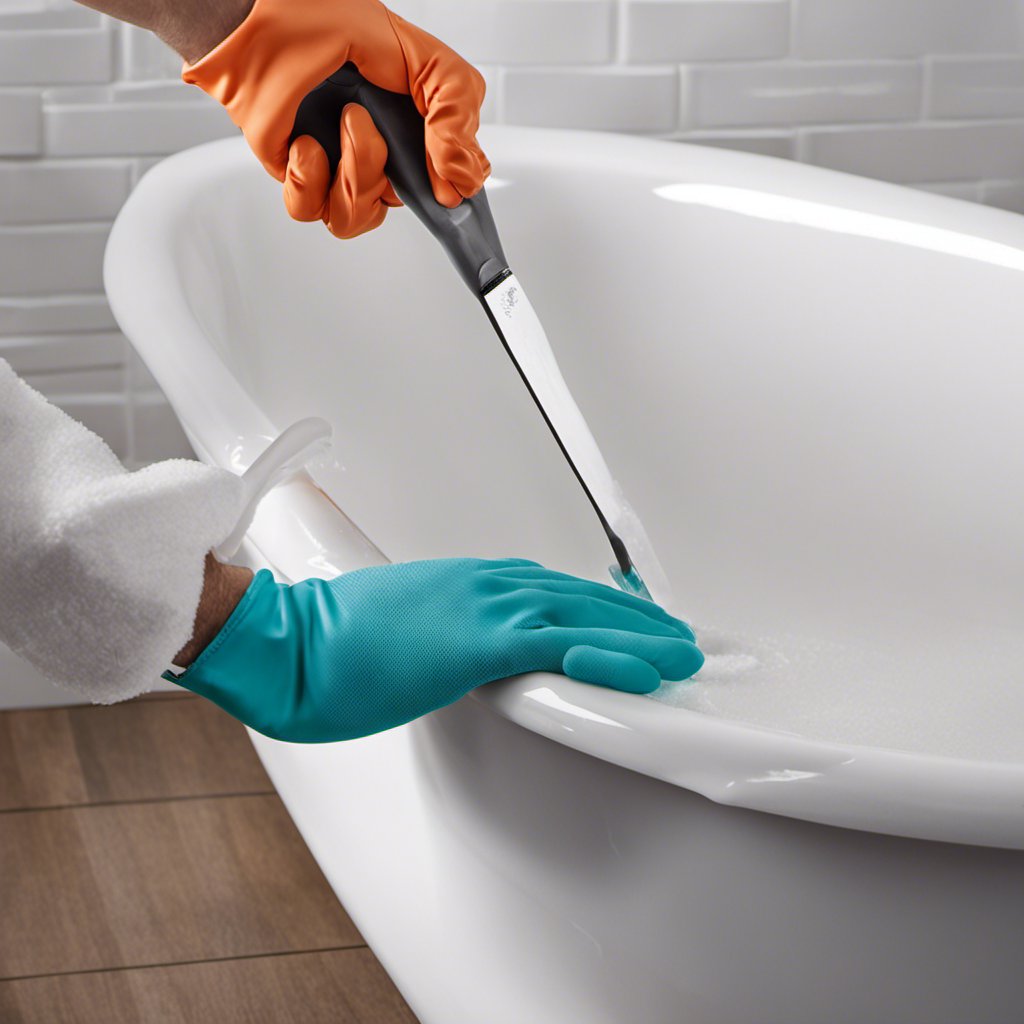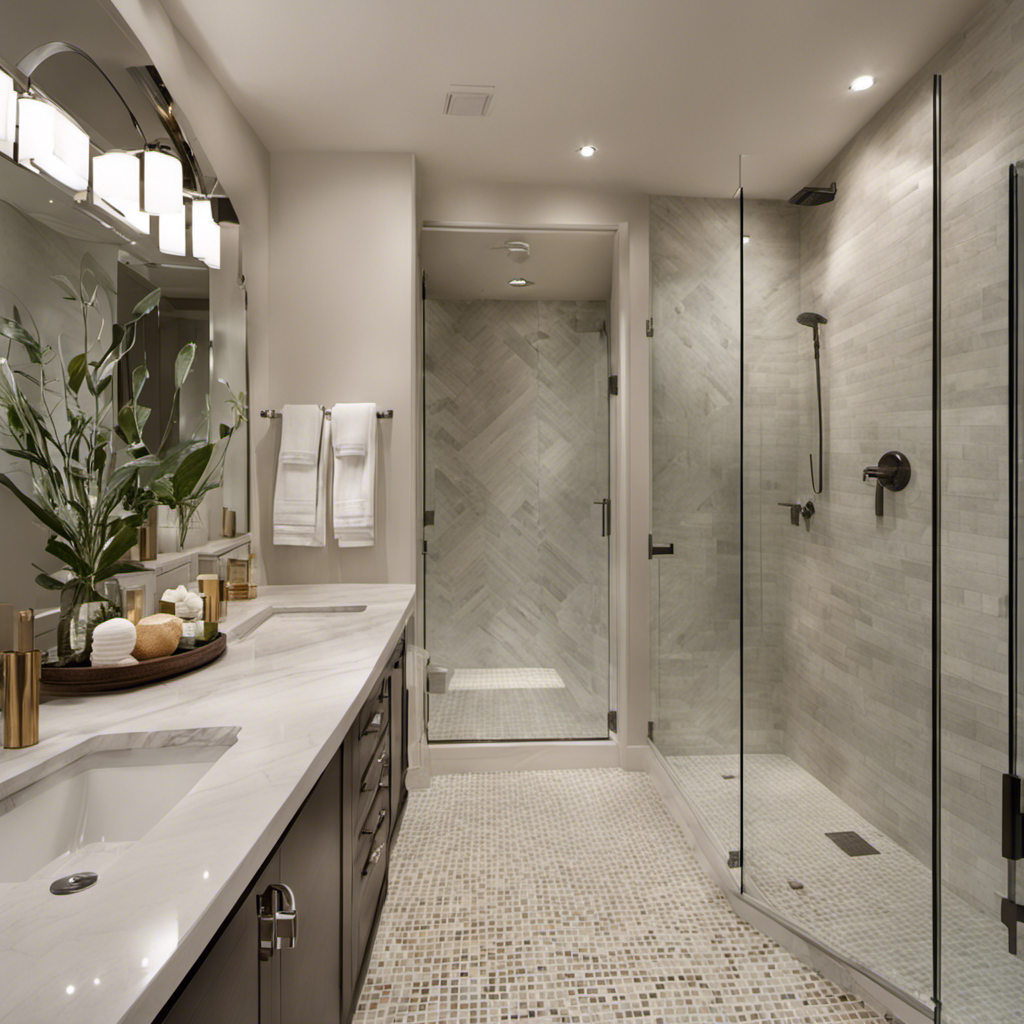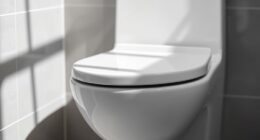Do you ever wonder why your cat chooses to relieve itself in the bathtub? Well, there’s a theory behind this feline behavior. It’s not just a random act, but rather a way for your cat to communicate something to you.
Understanding the reasons behind this behavior can help you address any underlying issues and find solutions to prevent it from happening. In this article, we will explore common reasons, medical causes, behavioral issues, and provide helpful tips to keep your bathtub urine-free.
Key Takeaways
- Cats may pee in the bathtub due to urinary tract infections, territorial marking, stress or anxiety, dirty or overcrowded litter boxes, or inadequate litter box placement or type of litter used.
- Medical causes such as urinary tract infections and kidney disease should be ruled out by consulting with a veterinarian.
- Behavioral issues can also lead to cats peeing in the bathtub, and training techniques and positive reinforcement can help encourage litter box use.
- To prevent cats from peeing in the bathtub, keep the litter box clean and easily accessible, experiment with different types of litter or litter box designs, use positive reinforcement, clean up accidents thoroughly, and be patient and consistent in breaking the habit.
Common Reasons for Cats Peeing in the Bathtub
One of the most common reasons why cats pee in the bathtub is because they may have a urinary tract infection. Cats with this condition often experience pain or discomfort while urinating, which can lead them to associate the litter box with pain. As a result, they may seek out alternative places to relieve themselves, such as the bathtub.
Another reason for this behavior is territorial marking. Cats have scent glands in their paws, and when they scratch the bathtub surface, they leave their scent behind, marking their territory. This behavior is more common in unneutered male cats, as they have a stronger drive to mark their territory.
Understanding these reasons can help you address the issue effectively. Now, let’s explore the medical causes of cats peeing in the bathtub.
Medical Causes of Cats Peeing in the Bathtub
When cats are peeing in the bathtub, it could be due to medical causes. One common medical reason is urinary tract infections (UTIs). UTIs can cause discomfort and an increased urge to urinate, leading cats to seek out alternative places, like the bathtub, to relieve themselves.
Another possible medical cause is kidney disease. Cats with kidney disease may experience increased thirst and frequent urination, which could result in them using the bathtub as a makeshift litter box. If your cat is exhibiting this behavior, it is important to consult with a veterinarian to rule out any underlying medical conditions. Understanding the medical causes of cats peeing in the bathtub can help guide the appropriate course of action for your furry friend.
Now, let’s explore the behavioral issues that can lead to cats peeing in the bathtub.
Behavioral Issues Leading to Cats Peeing in the Bathtub
If your kitty is using the bathtub as a makeshift litter box, it could be due to behavioral issues. Cats are creatures of habit, and sometimes they develop undesirable habits like peeing in the bathtub. However, with the right training techniques and understanding of environmental factors, you can encourage your cat to use the litter box instead.
Here are some training techniques for cats to use litter boxes instead of bathtubs:
- Ensure the litter box is clean and easily accessible.
- Use positive reinforcement, such as treats or praise, when your cat uses the litter box correctly.
- Provide multiple litter boxes in different locations, especially if you have multiple cats.
Environmental factors that may contribute to cats choosing to pee in bathtubs include:
- Stress or anxiety, such as changes in the household or new pets.
- Dirty or overcrowded litter boxes.
- Inadequate litter box placement or type of litter used.
Tips to Prevent Cats From Peeing in the Bathtub
To prevent your kitty from using the bathtub as a makeshift litter box, ensure the litter box is clean and easily accessible. Cats are meticulous creatures, and a dirty litter box can be a major deterrent for them. Scoop the litter box at least once a day and change the litter regularly.
Additionally, consider providing litter box alternatives for your cat. Some cats prefer different types of litter or litter box designs. Experiment with different options to find what works best for your furry friend.
Another effective technique is training your cat to use the litter box consistently. Use positive reinforcement, such as treats or praise, when your cat uses the litter box correctly. If accidents happen, clean the area thoroughly to eliminate any lingering odor.
With patience and consistency, you can help your cat break the habit of using the bathtub as a litter box.
How to Clean up Cat Urine From the Bathtub Effectively
You should try using a mixture of vinegar and water to effectively clean up cat urine from the bathtub. This natural cleaning solution is not only effective in removing the odor, but it is also safe for both you and your cat.
To use this solution, simply mix equal parts of vinegar and water and apply it to the affected area. Let it sit for a few minutes before wiping it clean with a cloth or sponge.
In addition to using vinegar and water, there are other DIY remedies that can help deter cats from using the bathtub as a litter box. Consider trying the following:
- Place aluminum foil or double-sided tape in the bathtub to create an uncomfortable surface for your cat.
- Sprinkle citrus peels or essential oils, such as lemon or orange, around the bathtub. Cats dislike the smell of citrus.
- Provide your cat with a designated litter box that is easily accessible and appealing to them.
Frequently Asked Questions
Can I Use Regular Household Cleaners to Clean up Cat Urine From the Bathtub?
Yes, you can use regular household cleaners to clean up cat urine from the bathtub. However, it’s best to use specialized cleaning techniques and alternative cleaning solutions for effective odor removal.
How Long Does It Typically Take for a Cat to Stop Peeing in the Bathtub After Addressing Behavioral Issues?
To train your cat to use the litter box properly, it’s important to establish a consistent routine. By providing a clean and accessible litter box, your cat will likely stop peeing in the bathtub within a few weeks.
Are There Any Natural Remedies or Home Remedies to Prevent Cats From Peeing in the Bathtub?
To prevent cats from peeing in the bathtub, you can try using natural deterrents like citrus sprays or aluminum foil. Additionally, implementing training methods such as providing a clean litter box and using positive reinforcement can help redirect their behavior.
Can Stress or Anxiety Cause Cats to Urinate in the Bathtub?
When your cat pees in the bathtub, it could be a sign of stress or anxiety. Understanding cat behavior and dealing with cat anxiety can help resolve this issue.
Is It Possible for a Cat to Develop a Medical Condition That Specifically Causes Them to Pee in the Bathtub?
It’s possible for cats to develop feline urinary tract infections, which can lead to peeing in the bathtub. Additionally, changes in a cat’s surroundings, like stress or anxiety, can trigger bathtub urination.
Conclusion
So, now you know all about why your beloved feline friend chooses to use the bathtub as their personal bathroom. From medical issues to behavioral quirks, there are many reasons why cats exhibit this peculiar behavior.
But fear not! Armed with this knowledge, you can take proactive steps to prevent your cat from turning your bathtub into a litter box. And if all else fails, remember that cleaning up cat urine from the bathtub can be a truly gratifying experience.
Happy cleaning!

